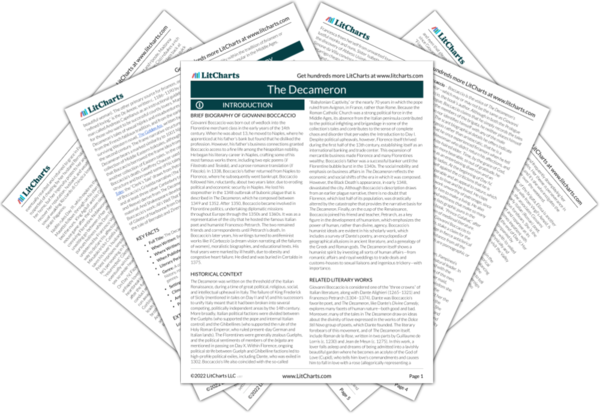Although a pregnancy resulted from the Abbot’s illicit affair with Ferondo’s Wife, in true
fabliaux fashion, there are no bad consequences. Ferondo deserved to be cuckolded thanks to his extreme lack of intelligence and common sense—illustrated humorously though his boasts that he spoke to the Archangel Gabriel, although he misremembers his name—and the jealousy with which he unfairly guarded his wife. The lack of punishment points to the competing value systems in
The Decameron: although the logic of the tales is often organized around and expressed in the language of traditional Christian morality, in the end, few if any sexual sins are ever punished.


